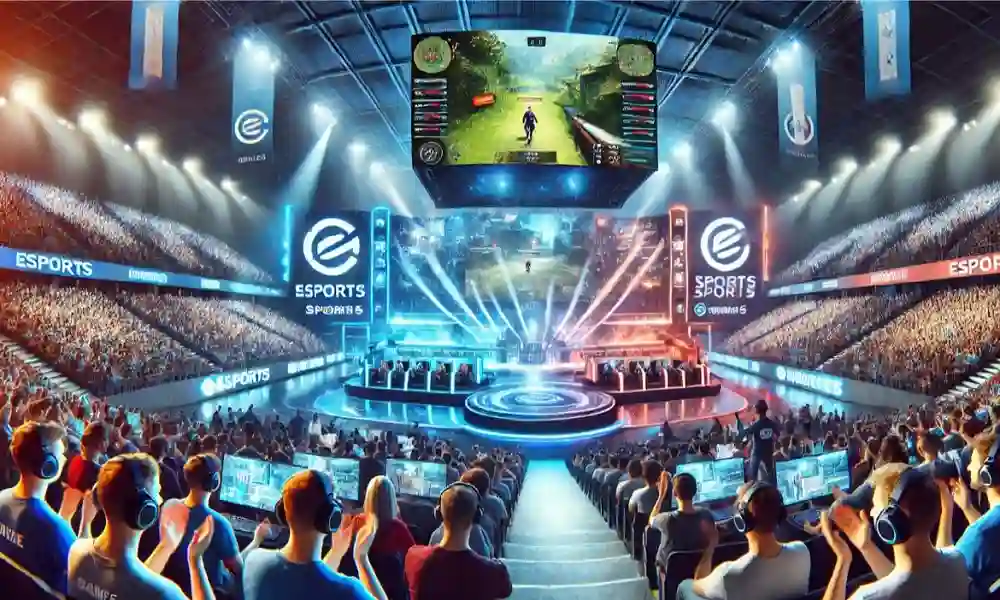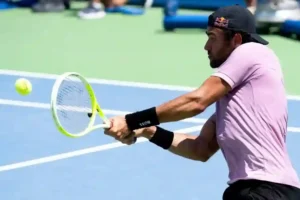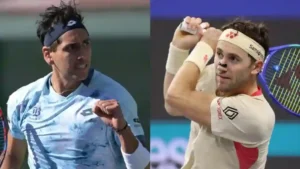How eSports is Challenging Traditional Sports for Popularity

Okay, let’s talk about the crazy rise of eSports. No, not the guy who sits next to you at work playing Candy Crush, but the big-time, professional, globally broadcasted eSports that’s suddenly giving traditional sports a run for their money. If you think this is just a “niche thing” or a fad, you’re wrong—how eSports is challenging traditional sports for popularity is more than a headline; it’s becoming the new mainstream. I remember the first time I watched a League of Legends tournament. It felt like a culture shock, like walking into an anime convention in a football jersey. Anyway, fast forward a few years, and now I’m questioning if I should swap my fantasy football league for a fantasy gaming one.
The Rise of eSports: It’s Real, Y’all
So here’s the deal. Once upon a time, eSports was just a bunch of nerds (myself included) in basement tournaments, gathering around their PCs like it was some secret club. But that was years ago. Now, it’s a multi-billion-dollar industry. I mean, how did we get here? Well, things exploded with platforms like Twitch and YouTube Gaming. You can watch gamers do their thing live, 24/7. It’s like sports, but without the sweaty locker rooms and bad referees.
The numbers? Wild. The 2023 League of Legends World Championship had over 5 million people watching it at the same time. To put that in perspective: when the NBA Finals aired the same year, they peaked at just under 13 million. Sure, that’s still impressive, but the gap is closing fast. How eSports is challenging traditional sports for popularity isn’t just about the stats; it’s about the audience—the younger, digital-native crowd that grew up watching other people play rather than hitting the field themselves.
Generational Shifts: I’m Watching You, Gen Z
Alright, let’s get into the nitty-gritty of it. Traditional sports have been fighting for the attention of a younger audience that’s more interested in Netflix, TikTok, and, you guessed it, eSports. Like my cousin Tim, who used to play soccer, but now spends his weekends watching Overwatch League instead. This shift in attention is how eSports is challenging traditional sports for popularity—and it’s not even subtle.
Here’s something that’ll make you feel old: over 70% of Gen Z males identify as gamers. That’s a lot of people who aren’t tuning into the Super Bowl. And the best part? eSports doesn’t require a $100 ticket or even a stadium to watch it. You just need a screen. I could’ve used that when I was younger, trying to drag my mom into the cold bleachers for another game that my team didn’t even win.
Show Me the Money: eSports Is Big Business Now
Here’s where it gets real: follow the money. Big brands are jumping in like it’s the hottest new thing. We’re talking Red Bull, Nike, Intel—names you know and trust. It’s wild. I remember the first time I saw a team jersey sponsored by Puma. It felt like I was in some alternate reality where gamers were athletes. As crazy as it seems, these sponsorships account for a massive chunk of eSports revenue—more than 40%, actually. And the industry rakes in over $1.38 billion in a year. Let that sink in.
And yeah, it’s got all the bells and whistles now. We’ve got leagues, franchise systems, salaried players, coaches, analysts—you name it. It’s a well-oiled machine that rivals the traditional sports world. How eSports is challenging traditional sports for popularity? Well, when I see gamers with their own training camps and multi-million-dollar contracts, I can’t help but think maybe I should’ve stuck with my FIFA video game career
Tech and Streamin’ Magic: It’s a Whole New Game
Remember when sports had basic broadcasts? You’d catch a game on TV, maybe check stats online. But eSports? They’re on another level. You’ve got live streaming, multiple angles, and instant replays. It’s not just about watching the game—it’s about experiencing it. The other day, I was watching a stream, and the chat was going wild, voting on which play would happen next. It’s like voting for your favorite contestant on The Bachelor, but in real time.
And here’s the kicker: Virtual reality. Look, I’m not saying VR is going to replace real sports anytime soon, but eSports is leading the charge. Imagine stepping into a game like you’re actually there. I don’t know if I’m ready for a VR basketball experience, but hey, eSports is already thinking about it. It’s not just about playing—it’s about living the game. And that’s part of how eSports is challenging traditional sports for popularity. It’s the future, right here.
Community Vibes: Fans Without Borders
One of the coolest parts of eSports is that it’s truly global. Y’all, I can be sitting in my living room in the middle of nowhere (my couch, no judgment), watching a team in Korea take on a squad in Brazil, and it feels like we’re all part of the same worldwide family. No more worrying about time zones or country borders; eSports fans are literally everywhere.
I’ve had moments where I’ve argued over my favorite players with people I’ve never met—at 3 a.m. on Discord, no less. It’s like a big, weird, digital family reunion that never ends. The kind of loyalty I see in eSports fans? It’s fierce. More than I can say for my failed attempts at organizing a local baseball team. Don’t even ask about that year-long disaster. How eSports is challenging traditional sports for popularity? Look no further than the 24/7 fan chatter, memes, and memes about memes. It’s a lifestyle, and it’s here to stay.
More Than Just Players: eSports Careers for Days
I don’t know about you, but I’m sick of hearing that there’s only one way to be successful in sports. eSports is flipping that script. Sure, you can be a pro player, but you can also be an analyst, a coach, a shoutcaster (that’s a commentator in gamer speak), or even a content creator. Heck, my buddy Nick started a YouTube channel reviewing gaming headsets. He’s making more than I ever did trying to explain “fantasy football strategy” to a confused group of friends.
The point? eSports isn’t just about playing. It’s about an entire ecosystem of careers that feed into it. There’s an industry surrounding the industry—and as someone who’s barely made it past level 5 in Call of Duty, I’m kind of jealous of these guys. How eSports is challenging traditional sports for popularity is clear: it’s not just entertainment—it’s an economy.
The End Game: Where Are We Headed?
Here’s the thing: eSports isn’t slowing down. With more schools offering scholarships and degree programs in competitive gaming, this industry is clearly here for the long haul. In fact, some folks are even betting that eSports will one day be an Olympic event. Imagine that! Your grandma could be watching the eSports Olympic finals alongside the Summer Games. How eSports is challenging traditional sports for popularity? Look at the growth rates. Look at the sponsors. Look at your 12-year-old nephew who’s already made a career out of playing Minecraft.
If you think this is just a passing trend, well, I don’t know what to tell you. I’d bet money we’re just scratching the surface here. Just make sure you’ve got your popcorn ready for the next round.
Anyway, that’s how I see it—how eSports is challenging traditional sports for popularity. If you’re still not convinced, maybe check out the next big gaming tournament and let me know what you think. I’ll be the one in the chat arguing that my favorite team should’ve gone for the S-tier pick.





